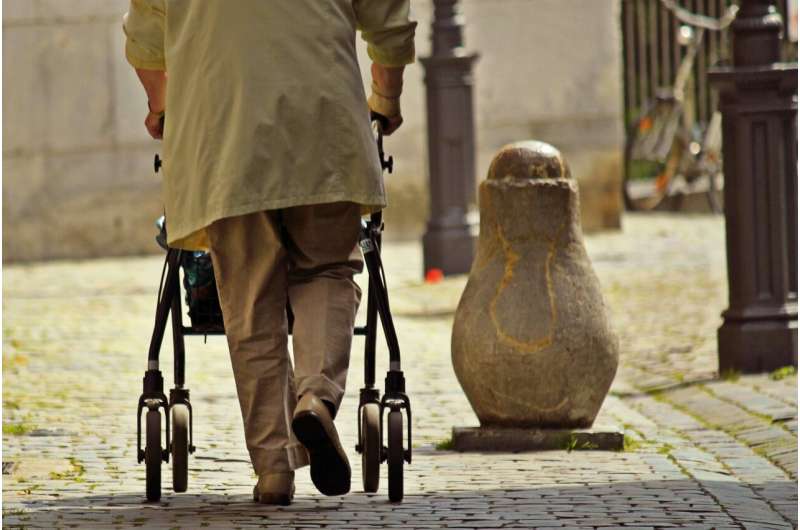Credit: Pixabay/CC0 Public Domain
A new study from VillageMD Research Institute, in collaboration with a scientist from Harvard-affiliated Marcus Institute for Aging Research, demonstrates the prevalence of frailty in both middle-aged and older adults and frail patients' challenges in accessing health care in the United States.
The study was recently published in the Journal of the American Medical Directors Association titled "Self-Reported Frailty and Health Care Utilization in Community-Dwelling Middle-Aged and Older Adults in the United States".
Frailty is a common geriatric syndrome of significant public health importance, yet there is limited understanding of the risk of frailty development at a population level, explains the research letter.
The research team, led by Aaron Yao, Ph.D., analyzed data sourced from National Center for Health Statistics' the National Health Interview Survey of 2019. They found that 9% of middle-aged adults (aged 45 to 64) were frail, and 22% of middle-aged survey respondents were pre-frail in the United States. The prevalence of frailty and pre-frailty was approximately 21% and 30%, respectively, in those aged 65 or older. Self-reported frailty was measured using the revised FRAIL scale (Fatigue, Resistance, Ambulation, Illnesses, and Low body mass index).
"Primary care providers can play an essential role in identifying frailty early and improving health equity," said Clive Fields, MD, cofounder and chief medical officer of VillageMD. "Primary care has the potential to intervene early and prevent the avoidable morbidity and mortality associated with frailness. Risk acuity-based reimbursement should recognize the health care costs associated with frailness as well as associated social determinants of health. Aligned incentives will drive improved outcomes for our frail and disadvantaged populations."
Frail people were more than twice as likely to experience delayed or omitted medical care compared to physically robust people. Supplemental analyses revealed more disparities in patients with low socioeconomic status. Frailty prevalence was two times higher in older adults and eleven times higher in middle-aged adults earning less than the federal poverty line (FPL) compared to those earning ≥400% FPL.
Lower family income and lower educational attainment make it extremely challenging for frail people to access health care. Socioeconomically disadvantaged, frail middle-aged adults were found to have the worst access to health care in the supplemental analyses. For example, in middle-aged adults, frail people with family income below 200% FPL were 16 times more likely to delay medical care as compared to robust people with ≥400% FPL.
An internal analysis of the Houston market demonstrated that Black and Hispanic patients engaged in the VillageMD care model had better access to care and outcomes than other patients in the community.
"Proactive identification and prevention of frailty, along with improvements to value-based primary care payment systems, can result in cost savings and improved health care for vulnerable populations," Dr. Fields added.
More information: Aaron Yao et al, Self-Reported Frailty and Health Care Utilization in Community-Dwelling Middle-Aged and Older Adults in the United States, Journal of the American Medical Directors Association (2022). DOI: 10.1016/j.jamda.2022.12.007
Provided by VillageMD























